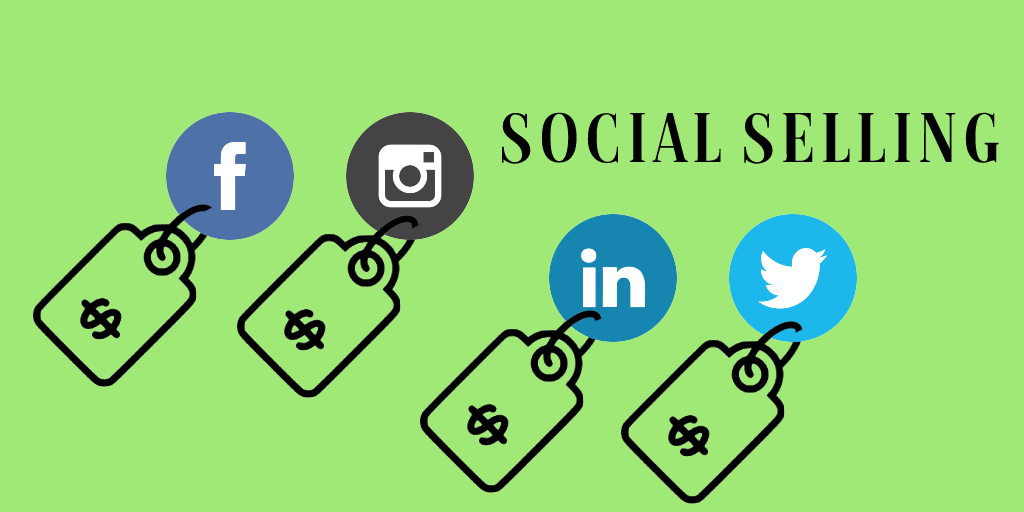Did you know that using social networks can help you grow your business? Despite seeing these spaces, mainly as entertainment environments, the different networks can also function as important sales channels. This is the result that your company can achieve by using Social Selling.
Did you know this strategy?
In short, this is a technique that uses social media spaces as direct sales channels of the company. Interactions are made one-to-one, i.e. between sellers and their potential customers.
They are based on 3 pillars:
In the involvement of the public;
In building personalized relationships;
On sale based on exclusive customer preferences.
Throughout the content, you’ll understand the details about this action and some of the key reasons that make Social Selling something that your sales team should implement as one of the daily practices. Check!
What is social selling?
Social Selling is a process of relationship between brands, represented by the sales team, and consumers, through social networks. Major platforms such as Facebook, LinkedIn, Twitter, Instagram and TikTok can be used for this purpose.
This is a new way to develop meaningful relationships with potential customers so that you’re the first person or brand a potential customer thinks about when they’re ready to buy.
In practice, it is to use your social networks to:
Find:prospect potential customers, with the right profile within what your company works for;
Connect :Start a conversation with that audience;
Understand:know the difficulties they have today and how your company can help;
Building trust relationships : generate value in one-to-one conversation by nurturing potential customers with relevant information
This strategy allows your sales team to attract the right potential customers and create an engaging social media communication strategy, answering questions about the pain and difficulties of this audience through interactions and content sharing.
In the end, this process will contribute to the ultimate goal of the company: to be able to close new sales.
Importance of personalization for the success of social selling
It is important to note that Social Selling is not about bombarding unknown people with messages that have not been requested, even if privately. There’s a name for it: it’s called Spam. And make sure you don’t want to do that to your potential customers.
Social Selling is not just getting access to contacts, but building relationships and listening to the right time to join the conversation.
Only then can your sales team come up with a solution to a specific problem. The goal is to make your potential customer’s life easier, rather than looking more like an advertisement to ignore.
This means that Social Selling only works as a personalization strategy.
This action is based on personal, one-to-one communication. This is different from the marketing strategy for social networks, since
there communication happens from one to many.
In traditional marketing actions, the goal is to increase the engaged audience and generate knowledge about the brand. In Social Selling the ultimate goal is the same, but individually. In the end, the lack of customization significantly reduces the effectiveness of communications, making it difficult to generate new Leads and customers.
3 Benefits in applying social selling
Now that we understand what Social Selling is, you can still wonder why you need to care about this strategy and how to do it the right way.
That is why we will now know the 3 most important benefits that are achieved from the use of this strategy.
1. Your company talks to the right people
Social Selling is more effective for engaging directly with potential customers, i.e. the audience with the right profile, although you need a good reason to get in touch before sending a message.
This means that sellers can share their content on this channel and reach OUT-of-reach CEOs and large customers who may seem out of reach at first by sharing relevant content and building a brand that they trust.
2. You gain the trust of the public that in the future comes to fruition in sales
Executives usually buy from people they trust, not someone they don’t trust. This happens even when there is a better offer from someone or some company that is less familiar.
That’s why putting most of your sales efforts into calls that aren’t requested by potential customers is a strategy that typically has low success rates, although it can still bring in some customers.
However, Social Selling acts as an intermediary between the buyer and the seller, allowing them to first become aware of each other’s existence and then conduct direct contact.
This requires sellers to be present at all stages of the journey of their customers and buyers, precisely to build this sense of familiarity.
This generates long-term confidence on both sides.
Later, on the shopping journey, buyers will have a favorable impression of a solution that was presented to them by someone who was already part of their professional network. This is a determining element in effecting a purchase.
3. Can you keep up with the competition
You can also use the Social Selling strategy to monitor what your competitors are saying and what types of responses they are receiving, allowing you to use the lessons learned, successes and failures to develop your strategy.
Social Selling tools can also help you understand more about how potential customers are using a competing solution.
For example, you can monitor competitor mentions to find out if there are common complaints about a specific solution that you can solve.
Is social selling for everyone? Is it also for b2b?
Knowing these important benefits, the question may arise: Is Social Selling a strategy that works for any company?
Who works in the B2B model,that is, from company to company, can benefit and make use of it?
In practice, Social Selling is used by companies that rely on complex sales, which take time for the decision maker to make a purchase.
This means that yes, the strategy is key to having good results in b2b selling.
For B2C, the strategy is not very efficient. In the case of this business model, with direct sales to the end customer, the purchase happens quickly and counts more discount strategies, for example.
Some data help to prove the importance of Social Selling for the B2B market.
A famous survey by IDC (International Data Corporation) revealed that:
75% of B2B buyers and 84% of executives in the Position of C-Level or Vice President (VP) claim that they use social networks to make purchasing decisions;
Professional online networks, such as LinkedIn, are the number 1 information preference of shoppers in the final stretch of the purchase process;
The B2B buyer who uses social media channels to buy is more senior, has a larger budget, makes more frequent purchases, and has greater control of the purchasing process than a buyer who does not use those channels;
B2B buyers claim that the biggest benefit of social media communication is gaining more confidence and comfort with their decisions.
With this information, it is clear that companies that close B2B deals are the ones that benefit the most from the strategy.
How do I apply social selling in my company? full step-by-step
As we’ve seen, this is a long-term relationship building strategy that involves a lot of information gathering and active listening by the company. But what will be the process to implement? Is there a walkthrough?
Here you will learn a series of 5 steps to get started with Social Selling.
With that in mind, we’re going to build a sales strategy through social channels from scratch.
1. Choose your channel mix
We know that the strategy can happen on any social platform that has a direct and individual communication space, but it tends to happen more often on LinkedIn.
Part of the reason is that this platform is more focused on professional interactions.
For companies that are trying to connect and contact potential customers through LinkedIn, the likelihood of looking like spam is much lower.
On the other hand, a cold contact on Facebook or Instagram can seem scary or an exaggeration, ending the chances of selling.
That said, part of its strategy is to define which set of channels you will use to apply Social Selling. In all cases, your team needs to have this information to avoid any kind of wrong contact.
2. Prospect on social networks
You can use search tools, such as LinkedIn, to find people with a certain position and connect with them who need your products or services.
To find the right audience, you need to have the answer to a few questions:
How do potential customers communicate? What kind of language do they use?
How do you share information? How often do networks use it?
What posts do potential customers engage in, leaving a reaction or comment?
To find the right people on all networks, we may monitor search terms related to the company or the products and services sold. For example, for a company that sells a CRM system, finding people who share content about “sales engagement” or “sales software” can be a good way.
You can also consider creating paid ads on relevant placements to reach decision makers and start contacting information that can help you take communication forward on the purchase journey.
3. Share content to build a space of trust
With the trust built on every interaction, Social Selling allows you to present solutions to buyers throughout the process, helping to guide decision making when they are involved with communication. Therefore, focus on sharing materials and other content that delivers something of immediate value to this audience.
One of the main reasons why strategy is a game changer for sales teams is that it provides a lot of context that can help tailor each process with each person.
When it comes to sharing content, understanding current tastes and difficulties is what determines whether you will succeed and engage those who receive it. Remember that in each submission your job is to prove value, generating positive and relevant discussions.
4. be available and participatory on social networks
Social Selling is about participation. While observing can provide a lot of information, especially in the prospecting stage, the actual results arise when you become part of the conversation.
Once you’ve identified potential customers, you’ll need to follow them and gradually build a relationship by resharing your posts, commenting, and tagging other users when appropriate.
Always be available to find new content and to ask important questions.
After you establish a connection, you can get other contact types such as your email address or phone through direct messages.
5. Rely on the right tools to track results
The goal of this type of sales is to equip your sales team with other forms of connection to generate revenue and results. That is, success involves converting connections into clients.
For this, it is important to have tools that facilitate this work and help measure the results:
Tool for Making Social Selling : LinkedIn has a great tool called Sales Navigator.
It makes the recommendation of the best contacts to address according to the filters you set. In addition, it gives you a score based on the effectiveness of your LinkedIn sales activities;
Tool to measure strategy success:CRM is the tool you can’t help but use. You need to configure it so that all Social Selling activities are synchronized with this central information hub. For example, new LinkedIn contacts must be registered in your CRM so you can track engagement and progress in the stages of the purchase journey.
Whatever tools you use, you’ll want to make sure you set and track the right metrics.
To measure the impact of these sales on revenue, retention, and Lead generation efforts, sales managers must develop a continuous data tracking process, placing this action on the List of Social Selling Best Practices.
Don't forget to monitor your data!
As we saw in the last topic, it is impossible to know whether the Social Selling strategy is working or not without monitoring data.
The results will only be clear if you can identify how many sales are made after the relationship works on the networks. With them, it is possible to optimize your process, making adjustments in the operation of both Sales and Marketing.




